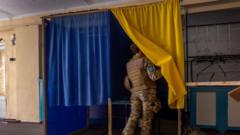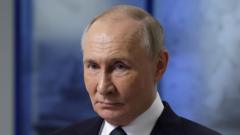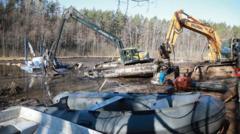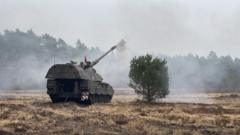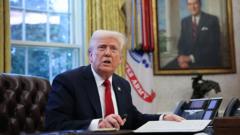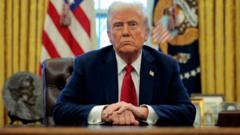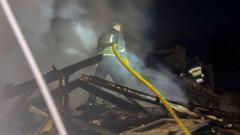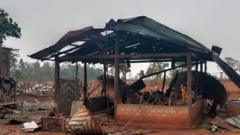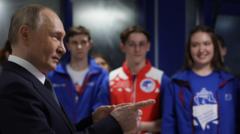An investigation highlights the deep-rooted military collaboration between the U.S. and Ukraine, revealing covert operations that have influenced the course of the conflict through strategic intelligence sharing.
Unveiling America's Covert Involvement in the Ukraine Conflict

Unveiling America's Covert Involvement in the Ukraine Conflict
A detailed insight into the hidden military partnership between the U.S. and Ukraine during the ongoing war with Russia.
The ongoing conflict in Ukraine has reached a pivotal moment as President Trump seeks to mend ties with Russian leader Vladimir Putin and advocate for a ceasefire. However, prior to Trump's renewed leadership, the U.S. and Ukraine had forged a significant partnership in military intelligence, strategic planning, and advanced technology. An investigation by The New York Times sheds light on this intricate alliance that has remained largely hidden from public scrutiny.
The U.S. government has publicly detailed its military support to Ukraine, amounting to $66.5 billion in weaponry; yet the investigation reveals that the depth of American involvement far exceeds previous knowledge. This covert partnership played a crucial role in shaping the broader battle strategies while also providing detailed operational intelligence directly to Ukrainian forces.
Five key insights have emerged from the findings. U.S. military installations, particularly in Wiesbaden, Germany, operated as a crucial hub for providing Ukraine with intelligence on Russian troop positions. This partnership, termed Task Force Dragon, was designed to bolster Ukraine's military efficacy against Russia's considerable manpower and resources.
American and Ukrainian military officials would convene daily to establish targeting priorities, which included Russian military units and strategic infrastructure. Intelligence analysts extracted data from satellite imagery and communications, ultimately relaying crucial GPS coordinates to assist Ukrainian forces in their operations. Interestingly, to mitigate the provocation, these targets were discreetly referred to as "points of interest" rather than explicit "targets."
As diplomatic efforts are pursued for peace in the region, this investigation reveals the layers of support that have significantly influenced the Ukraine conflict, raising questions about the future of U.S. involvement and the broader international dynamics at play.

